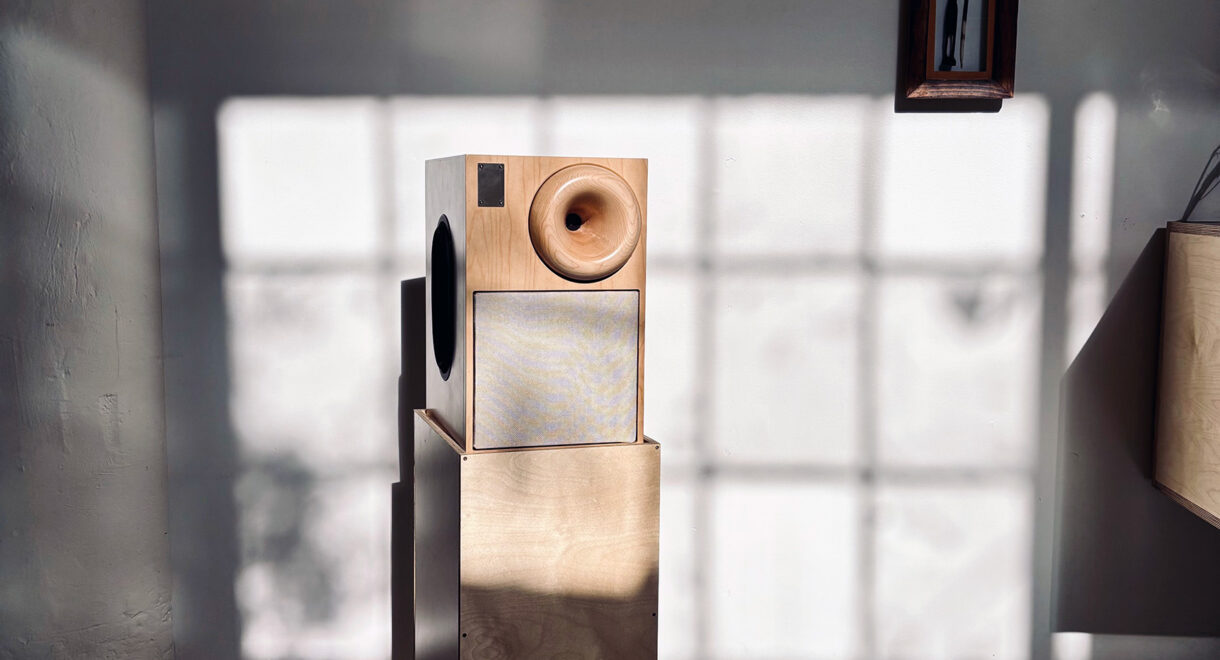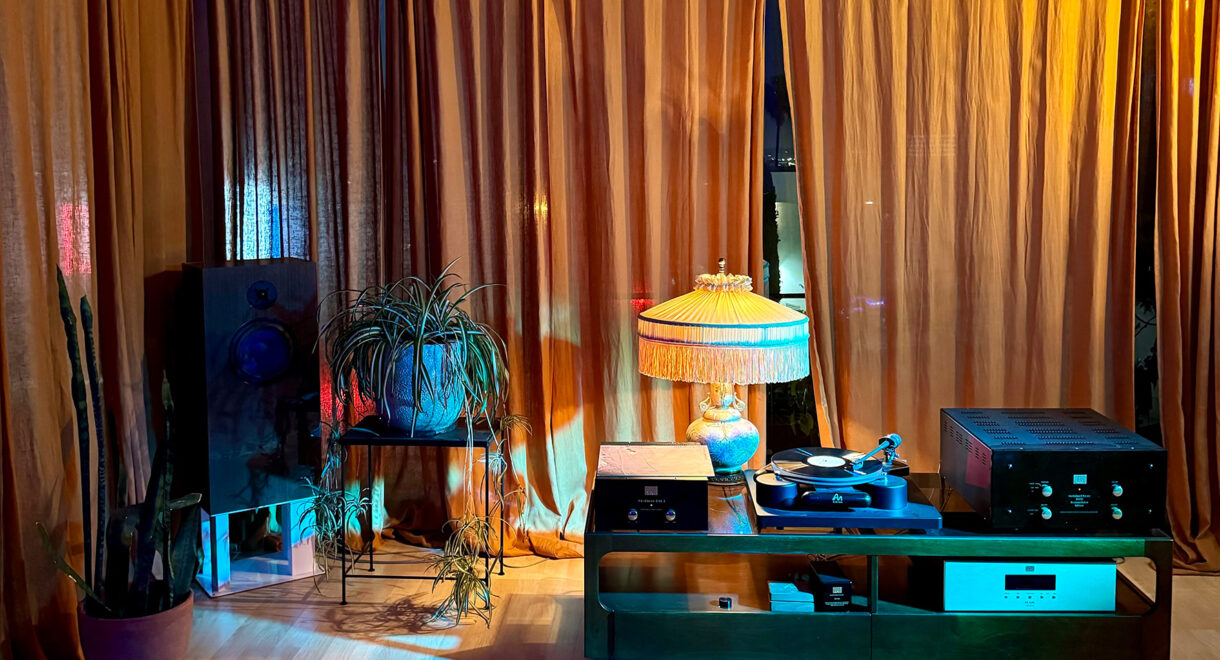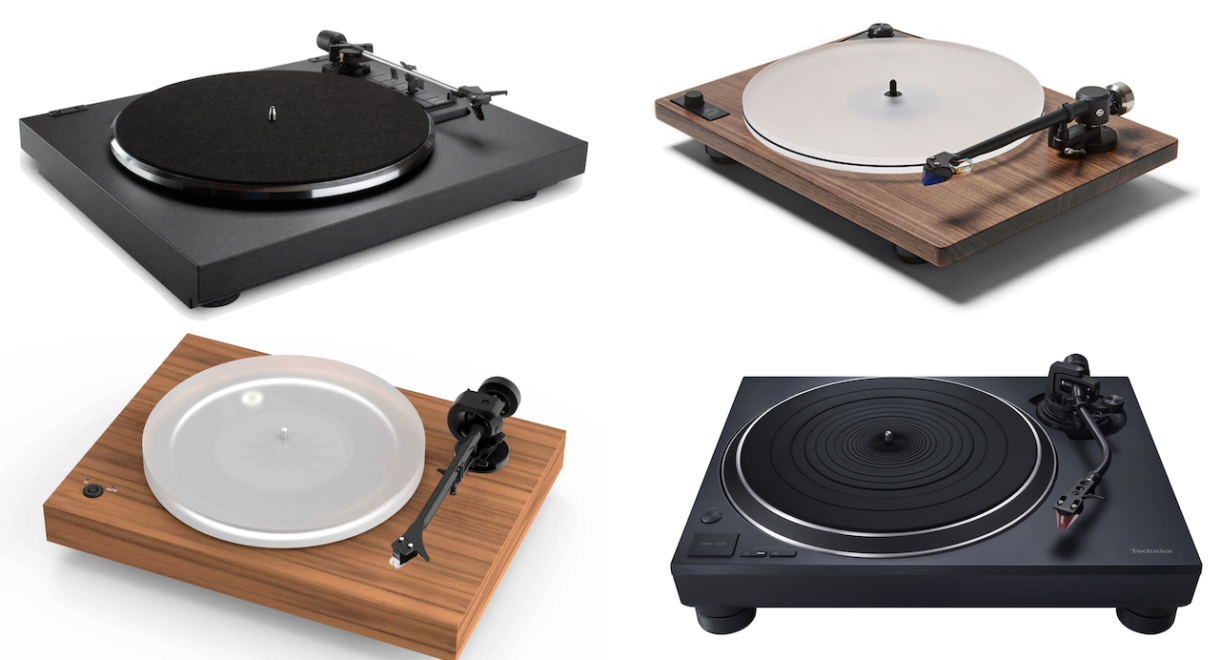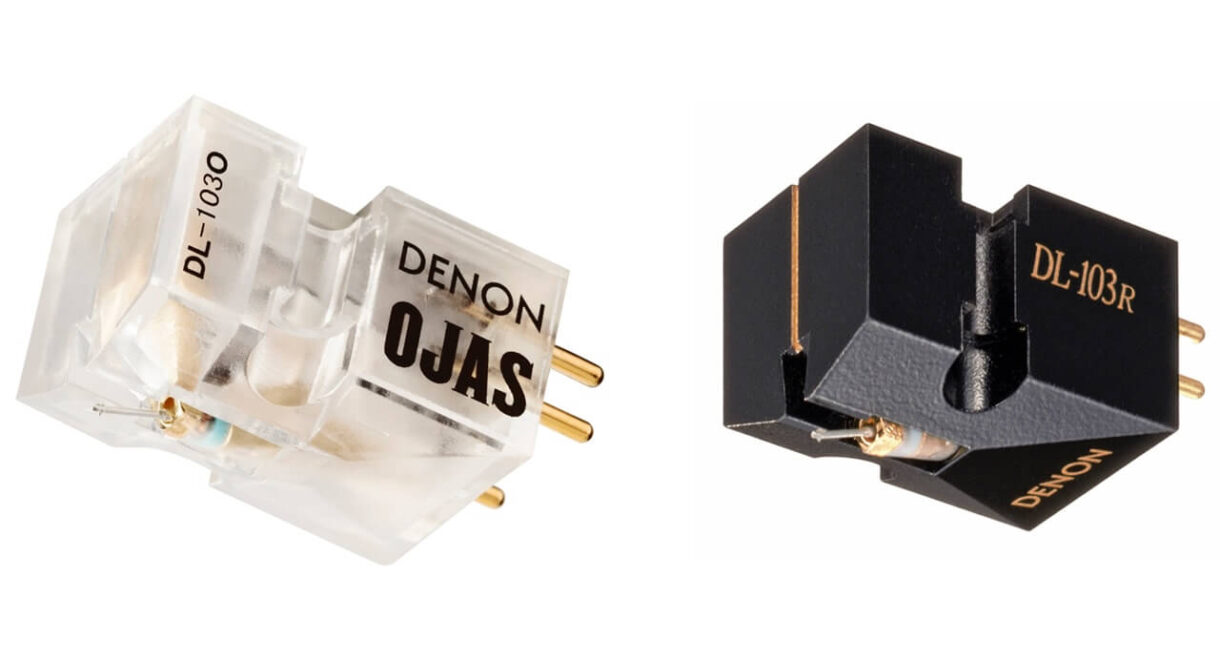Transparent clarity, deep bass, and “Invisible Sound” from German audio company ADS. Background: One of the lesser known hi-fi brands of the ’70s, ADS (Analog and Digital Systems) […]
Iconic Sansui Amplifiers: Exit to Vintage Street

One of the most iconic Japanese audio brands, vintage Sansui amplifiers have become super hot on the used market and we know why.
In my last year of high school, my brother came home one day with an old integrated amplifier. His boss at his part-time job (where he stripped and refinished old furniture) was clearing out his basement and gave it to him. Surplus to requirements.
I had a system of my own already but do remember thinking it looked somewhat cool. Black brushed metal face plate. Silver knobs. Black selector switches. Homemade wood case. Even then, in the early ‘80s, it was a retro-looking piece.
Not sure how much use that old amp got as my brother wasn’t a huge music nut. I was never aware of him having speakers or other equipment to use it with. He had a monster JVC ghetto blaster that probably got more use. I went off to university the following year and didn’t think about it again.

Fast forward 35 years. I get an email from my brother asking about the best way to get rid of his old amp. Photo attached. Sansui AU-555. At this point I’m just getting (back) into vintage audio. “Best way is to give it to me” was my immediate, excited reply. And so it came to me, and after a short stay with That Old Retro Store getting checked over and re-capped, became part of my then small but growing vintage audio set-up.
A bit about Sansui
Japanese audio was hot from the late 1960s to the early 1980s. With quality high and prices low, North American consumers bought up equipment from brands like Pioneer, Sony, Technics, Sansui, Kenwood and others by the truckload. And now, with the resurgent popularity of vintage audio, these brands are again hot commodities.
In my mind, Sansui is the iconic vintage Japanese audio brand. Luxman and Accuphase fans might object to that statement and I can’t disagree from a quality perspective – but we’re talking about a different level of affordability. Few Japanese audio brands have the same, close-to-rabid following, particularly when it comes to integrated amplifiers and receivers. Yes, they made respectable tuners, speakers and turntables, but amplification was their jam; the proof-in-the pudding is reflected in today’s rarity (they’re around, but folks don’t like to part with their treasures) and high prices when they do come up for sale.

Sansui Electric was established in 1947 and released their first tube amplifier into the market in 1954. Several other amplifiers and receivers followed, but it wasn’t until 1965 that they really made a mark with the AU-111 tube pre-main (integrated) amplifier, known as the “black panel ancestor.” At 40 watts per channel, the AU-111 was something of a powerhouse for its time, and it would stay in production into the early 1970s. To buy an AU-111 now takes crazy money.
In 1967, Sansui introduced their first solid-state integrated amplifier, the AU-777. This was followed in 1969 with several other models in the XXX series, including the AU-555 and the AU-999. Release dates are hard to pin down as individual models were introduced haphazardly (not in organized series groupings), but rough estimates have:
- AU-X500 models (9500, 8500, 7500, etc.) released around 1972
- AU-X900 (9900, 7900, etc. along with an 11000 and 20000) starting in 1975
- Japanese “07” series (or “17” internationally, including the AU-517 and AU-717) in 1976/77
- AU-919 in 1978
Several series of receivers were also released in the late ‘60s and through the ‘70s, including the venerable 800 in 1968, The “single digit” series (Eight, Seven and Six) in 1973, XX1 series (881, 771, 661, etc.) in 1974, 9090 in 1975, other X0X0s (8080, 7070, etc.) in 1977, and the G-series receivers starting in 1978 and through to about 1982.

As the ‘80s approached, business took a downward turn for Sansui. The Yen appreciated in value, impacting sales of export models (on which Sansui had become highly dependent). Strong unions and a tradition of “lifetime employment” in Japan made it hard to cut manufacturing staff to deal with cost pressures. Corners were cut elsewhere, including use of cheaper, lower-quality parts.
Quality took a hit, as did Sansui’s reputation, and sales fell further. Sansui shifted away from exports to focus on their domestic market, and slowly unravelled over the ensuing two decades. Sansui went out of business in 2014, but in truth had not been a force in the audio world for some 20 or more years before that.
My Sansui Amplifiers
In addition to the AU-555 passed on to me by my brother, I also own a “top of the XXX line” AU-999, purchased on eBay about a year after getting the 555. I’d read about the wonderful tube-like sound of the 999 and lucked into one in good cosmetic condition at a reasonable price from a local seller, so no need to worry about shipping damage or added costs for this 38.5 lb (17.5 kg) monster to get to me (the seller even delivered it to my office downtown). I count myself lucky as I’ve watched this model almost double in price in the four years I’ve had it.

The Sansui AU-555
As mentioned, the AU-555 needed a recap to get it running properly. In the five years since coming back from the shop, it has been rock solid. This 20 watts/channel amplifier (all you really needed in the early ‘70s driving efficient speakers, the norm for the times) has a big and beefy sound, with solid bass slam and control, and balanced detailed midrange and decent treble extension.

I’ve run the AU-555 in both integrated (pre-main) and pre-amp (through an external power amp) modes. As an integrated amp I’ve run Klipsch KLF-30s, ESS PS4As and B&W DM1200s with no trouble, and the sound quality was wonderful. The juice-loving KEF Calinda’s (83 dB @ 1 watt/1 meter efficiency) present perhaps a challenge-too-far for this little amp, but that’s a common issue even with my higher-powered amps.

In pre-amp mode with my 150 watts/channel NAD 2600, the AU-555 performs well, particularly with the KEFs. I’ve also run the AU-555 as pre-amp with the 35 watts/channel Dynaco ST-70 tube amp. The little Sansui’s pre-out is quite hot, so gain on the NAD needs to be dialed back to allow for fine volume adjustment and full-range use of the volume pot beyond an ear-blasting 2. With the Dynaco, gain can’t be controlled in this way, so things get loud pretty quick.
The Sansui AU-999
Although good things are written about how clear and tubey the AU-999 sounds – realistic presentation of room ambiance and dynamics, pearlescent midrange, and smooth, warm and organic acoustics overall – it also has a reputation for a lean low end. It’s definitely cleaner-sounding than the 555 – more refined and “audiophile” – but in its native state does have less bass slam.
The 999 was a different story service-wise. Not long after I got it, I started to notice some crackle in both channels at low volumes or when nothing was playing. Not surprising really with an almost 50 year-old amp. I figured I’d probably need to take it in for a service soon when I bought it, and so in it went.

Turns out it needed more than just a simple recap (although some capacitors were replaced). The amp suffered from a pretty severe channel imbalance, which was rectified with a new volume pot and replacement of the output transistors. As per mod discussion (KevZep) on AudioKarma, the subsonic filter was removed, and some other circuit tweaks were done to improve bass and clarity. The result was a more muscular sounding 999, benching 55+ watts/channel and with better (still not massive, but improved) bass response.

I’ve used the AU-999 in similar set-ups to the AU-555, with the same speakers and as pre-amp with the same power amplifiers. On its own (in integrated mode) it has a more audiophile presentation than the 555 with less “thickness.” It displays more authority with the inefficient KEF Calinda’s, but I prefer it combined with the NAD 2600 with those speakers. I like the AU-999 in integrated amp mode but love it as a pre-amp both with the Dynaco ST-70 and the NAD; both power amplifiers negate any bass deficiencies and allow the wonderful musicality of the Sansui to shine through.
A Sansui Wish List
In spite of “issues,” I’m very satisfied with my AU-999. I love the AU-555 too, but it doesn’t get a lot of use these days; I keep it more for nostalgic reasons than anything (a topic I plan to address in a future article).

I haven’t heard any of the other Sansui products from their golden age, but there are several that have piqued my interest. Of the XXX range, I understand the AU-777 (or more precisely the AU-777A) is the one to own from a pure sonic perspective. The AU-9500 is also desirable for its combination of sonic purity, clean appearance and power (75 old-school watts/channel is pretty solid for an integrated amp).
For pure power and refinement, I’d love one of the BA series (3000 or 5000) power amplifiers to use with the AU-999 as pre-amp, or one of the CA (control amplifier) range of pre-amplifiers. And then of course, the ultimate would be the one that really started it all for Sansui: the AU-111 pre-main tube amplifier. That would be a blast!
What else should I consider? Would love your input on an expanded wish list. Leave a comment, or drop me a note on the ‘Gram at @audioloveyyc.
This article originally appeared at ecoustics.com and has been published here with permission.










